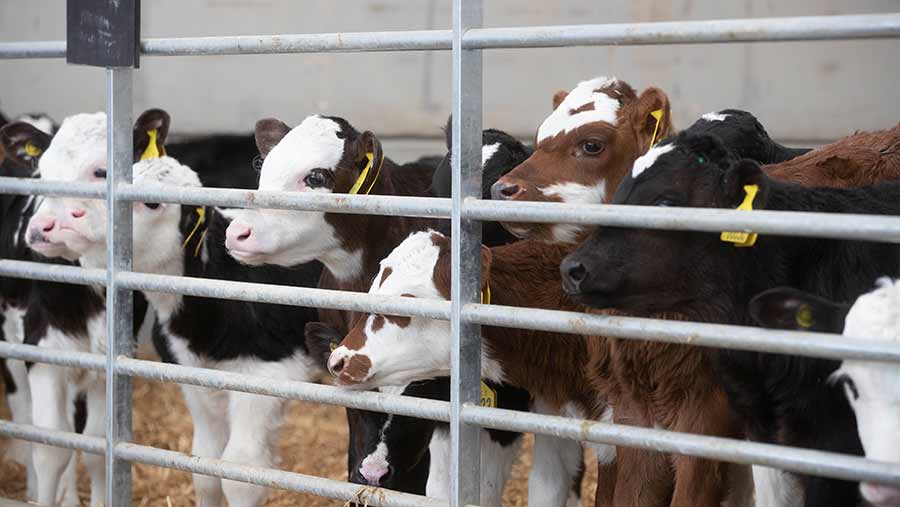How to group calves for successful social rearing
 © Tim Scrivener
© Tim Scrivener To successfully rear calves in pairs or groups, use benchmarks to select for calf health: below 3% mortality and less than 5% of calves with poor transfer of passive immunity.
Then pair/group calves before they are 14 days old, with an age range of no more than 14 days – preferably just seven.
This is the advice of Dr Jennifer Van Os, assistant professor in the department of animal and dairy sciences at the University of Wisconsin-Madison.
See also: Calves fed more milk make resilient cows
She says while research shows the benefits in liveweight gain and cognitive flexibility in heifers reared socially, health outcomes are not as clear-cut.
However, 72% of surveyed farmers rearing in pairs/groups were satisfied with calf health.
Health is one of the key concerns for farmers and vets when considering a switch from individual to group housing.
In fact, calf hutches were originally developed in the 1960s to counteract high levels of disease and death.
Solo housing remains the norm in the US, with 77% of surveyed farms still rearing in single hutches, says Jennifer.
“Farmers say they can control and monitor what calves are eating and health issues.
“Physical separation decreases disease risks, and calves are easier to handle for vaccinating and disbudding.
“There used to be a rational reason to quarantine calves, but things change, and the pendulum has swung,” she adds.
Social housing is not only more acceptable to the general public, but also important for calf welfare.
Cattle are herd animals and highly motivated by social contact.
It stimulates play behaviour, and calves learn appropriate social interaction and have more resilience to stress at weaning.
The result is a more adaptable and less neophobic heifer.
“This means they have a good learning ability and can adapt to change: new housing, feed, social groups – and they can learn to go into a parlour on both sides.
“Calves have greater solid feed intakes, higher weight gains and average daily gains, and it can protect against cold stress.
“To date, no study has shown that individually reared calves outperform pairs or groups.”
Challenges of switching to group housing
There are challenges to switching over, not least the cost of supplying the right housing system for groups, group size, and whether to feed manually or automatically.
However, the biggest barrier, Jennifer finds, is the unwanted behaviour of cross-sucking other calves.
“This was reported by 85% of producers who pair/group, and there is a spike in cross-sucking during weaning.
“One study said it was not associated with navel infection before weaning, or mastitis and cell counts later in first lactation.
“But there are strategies to reduce cross-sucking: feed enough milk and provide the opportunity to suckle on a teat,” says Jennifer.
A slow-flow teat, and allowing calves to suckle for a further 20 minutes after their milk bucket is empty, satisfies the natural urge to suck, as does sufficient milk volume, which leads to satiation.
However, a group of calves can sometimes result in worse respiratory outcomes, and group size is a risk factor.
“The same principles apply for good health whether in groups or alone, such as colostrum protocol, hygiene and biosecurity, good ventilation and all-in/all-out group formation.
“Individual housing isn’t the only way to keep calves healthy,” she says, adding that some farms may need to adjust management practices before transitioning from individual housing.
“Be careful about putting two single hutches side by side and getting calves to share a bigger pen, as both calves will squash into one hutch.
“This is a low-entry option, however, and gives you a chance to try it out. Then think of longer-term investment.”
Dr Jennifer Van Os was speaking at the TotalDairy conference (6-7 November, Stratford-upon-Avon).
